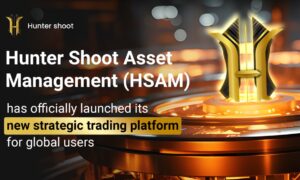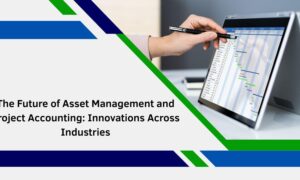Sustainable investing strategies that incorporate environmental, social, and governance (ESG) factors are gaining prominence. Asset managers are increasingly recognizing their duty to consider wider stakeholder interests beyond purely maximizing returns. This represents a cultural shift as investing based on conscience along with profit motives gains mainstream credibility. This article traces the evolution of ESG and its growing adoption in asset management.
The Emergence of Values-Based Investing
Socially responsible investing arose in the 1960s out of moral objections to supporting unethical activities like weapons production through investment. Early ESG approaches used negative screening to exclude stocks associated with concerns like human rights abuses. However, these values-based strategies were often dismissed as idealistic.
Since then, research demonstrating how sustainability risks impact investment performance has made the business case clearer. Studies show strong ESG standards lower risks while company practices affect brand value. Consideration of environmental and social externalities as investment factors has moved towards the mainstream.
Growth of ESG Data and Standards
Recent ESG growth owes much to improved disclosure standards and data availability. Regulations like the EU’s Non-Financial Reporting Directive compel companies to disclose details on emissions, diversity policies and other ESG metrics. The Sustainability Accounting Standards Board (SASB) has developed widely adopted industry-specific reporting frameworks.
These disclosures provide asset managers robust data for analysis instead of guesswork. ESG ratings agencies like MSCI now track thousands of stocks on numerous sustainability criteria. Better information quality enables constructing diversified ESG portfolios based on quantitative analytics rather than qualitative values alone.
From Niche to Widespread Adoption
Armed with better data, asset managers have developed sophisticated ESG integration techniques and offerings. Portfolio screening, best-in-class investments, thematic strategies, and proxy voting incorporation demonstrate ESG’s versatility. Ample research now supports environmental and social factor relevance alongside traditional financials for risk and return.
Initially viewed as a niche strategy, ESG has gained widespread traction. Global sustainable investments now total over $30 trillion with 25% annual growth. All leading asset managers now provide ESG options. While debates on labelling and impact measurement continue, ESG’s rise is clearly accelerating.
Drivers of Greater Adoption
Several forces are driving ESG’s rise. Democratization is expanding access to sustainable investing beyond institutions into retail. Women and millennials strongly support responsible investing. Climate change awareness and social justice movements are also catalysing interest.
Government policy is beginning to encourage ESG via regulations and incentives. Competitive pressures are also mounting as ESG investment outperforms. Mainstream embrace by large asset managers signals a tipping point. As metrics and data improve, adoption will likely continue increasing experientially.
Challenges and Limitations
However, issues persist around ESG definition, measurement, and reporting. Companies may engage in ‘greenwashing’ through misleading disclosures. Lack of standardization complicates benchmarking and performance attribution. Data gaps also remain, especially for small firms.
There are also debates regarding how broadly asset managers should define fiduciary duty to investors. Some argue focusing solely on financial returns fulfil obligations, while others contend ESG factors are integral to risk and return. Disagreements persist on when value priorities can outweigh shareholder interests.
The Road Ahead for ESG
Much progress on ESG in asset management has occurred, but room for evolution remains. Better disclosures, impact quantification and regulatory support can solidify ESG in the mainstream. But care is required to avoid oversimplification, inconsistency, and misuse of ESG labelling.
With transparency and integrity, sustainable investing can increasingly merge with core investment processes. Rather than a separate asset class, ESG will become an integrated factor set for long-term risk adjusted returns. Through this transformation, finance can better serve society and the environment while still fulfilling investor interests.
Active Ownership and Shareholder Advocacy Expand
Active ownership strategies are an important mechanism for ESG incorporation alongside screening and integration. Asset managers actively engage with companies regarding ESG issues as concerned shareholders and advocates.
Methods like proxy voting, shareholder resolutions, engagement meetings and board participation allow asset managers to positively influence corporate policies and disclosure. Stewardship codes now define investor responsibilities for active ownership. Supporting ESG shareholder resolutions has also increased significantly in recent years across major companies.
Active ownership provides constructive pathways for asset managers to enhance sustainability. Productive corporate engagement is preferable to divesting as a tool for change. As shareholders, asset managers should utilize their influence responsibly. Expanding active ownership capabilities will enable impact at scale while upholding fiduciary obligations.
ESG Integration in Private Markets Grows
While most prevalent in public equities currently, ESG adoption in private market strategies is also expanding quickly. Private equity, venture capital, real estate and infrastructure managers increasingly screen investments for ESG risks, require portfolio company reporting and provide value-add guidance.
Limited partners are also prioritizing fund managers with strong ESG policies when allocating investment capital. Missing the diligence bar often means losing access to capital. High profile cases of ESG negligence resulting in loss of LP trust are also catalysing change.
Large asset managers now expect ESG capabilities from general partners across asset classes. In private markets, where oversight is greater, ESG integration may accelerate faster than on public exchanges. The combination of LP and GP pressure will continue driving adoption in private asset management.
Final words
The growing adoption of ESG principles in asset management signals an expanding concept of fiduciary duty aligning investment with conscience. Powerful forces are driving mainstream acceptance of sustainable investing as an ethically and financially prudent strategy. Although challenges remain, ESG considerations are becoming integral for prudent asset managers seeking to create holistic long-term value for investors and society.



































